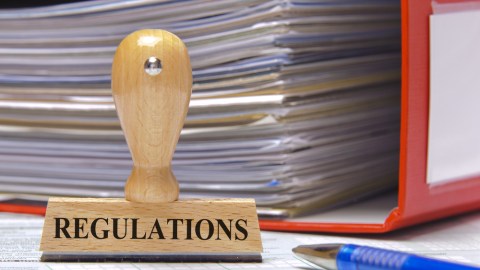Thinking Up a Model For Self-Regulating Regulations

What’s the Latest?
While watching Big Think’s recent interview with Barney Frank, I was struck by one of his points about innovations begetting new rules by which they must abide:
“At some point innovation will reach a kind of critical mass and it will so change the situation that you need new rules. And the problems come in from this standpoint when the regulations lag the state-of-the-art and when innovations have created new phenomenon that are not well regulated.”
The former House Finance Services chairman goes on to detail the history of financial regulations — antitrust, stock market, S & L, etc. — which makes sense considering they’re his specialty. My focus, though, was turned away from finances and shifted toward the regulation of new technology. How does a regulatory body adapt to the breakneck speeds of 21st century technological innovation?
What’s the Big Idea?
This is a topic that was covered at length last month by Patrick McLaughlin of The Hill. In his piece, McLaughlin advocates for regulations of new technologies that operate under a process he calls “adaptive self-disintegration,” basically regulations that act like Mission Impossible messages and self-destruct after they have served their use. He sums the goals of the concept up as such:
“Rather than wait for a new technology to force self-examination, agencies should proactively search for ways that their rules might be hindering technological growth and eliminate those barriers.”
Adaptive self-disintegration is similar to idea of sunsetting regulations:
“A sunset clause makes a rule self-destruct after some time period — e.g., five years. Agencies then reexamine whether the rule was accomplishing its goal and, if so, whether its continuation is necessary to maintain that goal’s accomplishment. Sunsetting is a form of nonadaptive self-disintegration.”
What separates adaptive self-disintegration from sunsetting are the shiftable benchmarks that, when reached, will automatically end the regulatory policy — thus an adaptable trigger rather than a preset. These triggers could include basic passage of time but also signs that the rule has outstayed its welcome and is now stifling growth.
The jutting flaw of adaptive self-disintegration is that making the expiration benchmarks shiftable thus allows the body overseeing the regulation near total subjective control over them. In McLaughlin’s case, that body is the National Highway Traffic Safety Administration (his proposal focuses on services like Uber and Lyft). I don’t want to make any assumptions (or misassumptions) about the ethical fortitude of that organization, but you’d be putting a lot of eggs in one basket if you were to grant anyone that much control over whether regulations should expire early.
I don’t necessarily have a better solution than what McLaughlin proposes. Some sort of non-partisan board seems to be the best idea but, more often than we’d like, such ideas tend to be among the best laid schemes of mice and men.
Keep Reading at The Hill
Photo credit: filmfoto / Shutterstock



